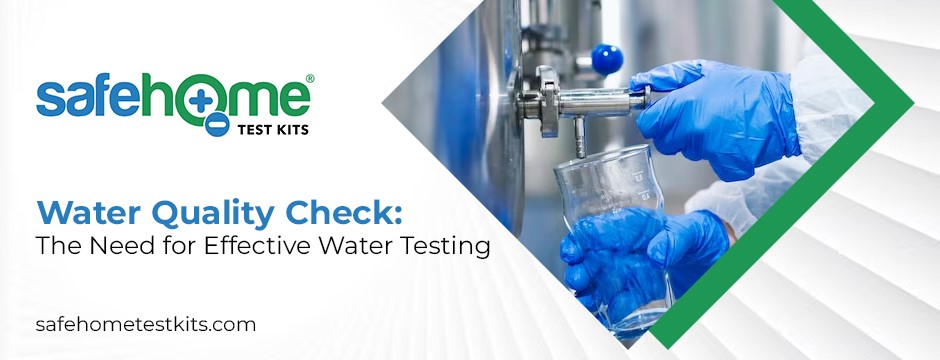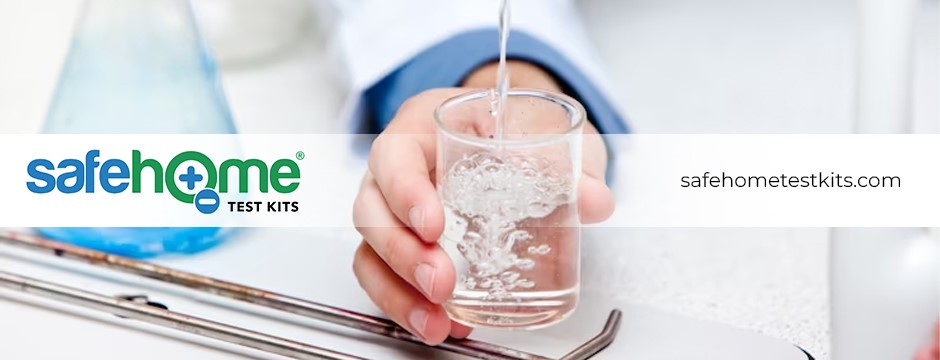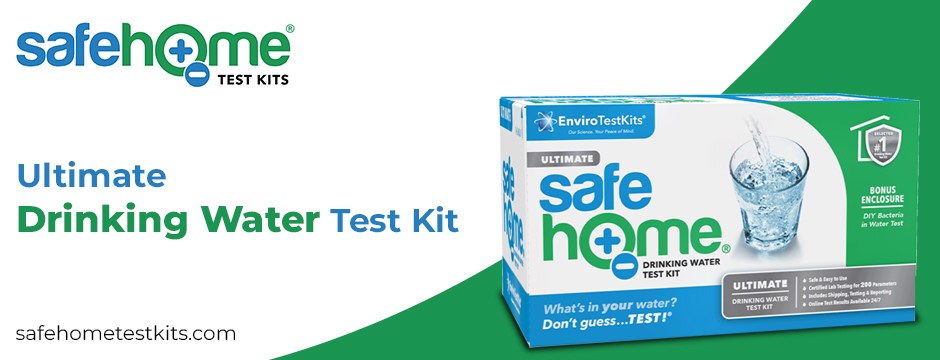Water Quality Check: The Need for Effective Water Testing

Water is the essence of life, a vital resource that sustains all living beings on Earth. However, the alarming increase in pollution and industrial activities has raised concerns about the water quality we consume. It is crucial to understand the need for effective water testing to ensure that the water we rely on is safe and free from contaminants. This blog explores the importance of water quality checks, the potential risks associated with contaminated water, and the role of advanced testing methods in safeguarding our health and the environment.
The Growing Concern
As populations burgeon and industrialization intensifies, so does the stress on water sources. Pollution from agricultural run-off, industrial discharges, and improper waste disposal threatens the quality of both surface and groundwater. Contaminants such as heavy metals, pesticides, bacteria, and chemical pollutants find their way into water bodies, posing a significant risk to human health and ecosystems.
Health Implications
Consuming water contaminated with harmful substances can lead to a myriad of health issues. Waterborne diseases, including cholera, dysentery, and typhoid, are directly linked to the ingestion of contaminated water. Moreover, long-term exposure to certain pollutants such as lead and arsenic can result in severe health conditions, including neurological disorders, developmental issues in children, and an increased risk of certain cancers.
Environmental Impact
The consequences of water contamination extend beyond human health. Aquatic ecosystems suffer when exposed to pollutants, leading to the decline of fish populations, disruption of food chains, and the degradation of water quality. Contaminated water can also infiltrate soil, affecting agricultural productivity and threatening the overall environmental balance.
The Need for Water Testing
Regular and thorough water testing is the first line of defense against waterborne threats. Testing provides valuable insights into the chemical, physical, and biological composition of water, allowing authorities and individuals to identify potential hazards and take corrective measures. Understanding the need for effective water testing involves recognizing the following key aspects:
Regulatory Compliance
Many countries have established stringent regulations governing water quality standards. Compliance with these standards is essential for public health and environmental protection. Effective water testing ensures that water sources meet these regulatory requirements, preventing the distribution of substandard water to consumers.
Early Detection of Contaminants
Advanced water testing methods allow for the early detection of contaminants, which allows for prompt intervention. This proactive approach prevents the escalation of water quality issues and mitigates potential health and environmental risks.
Protecting Public Health
It is a fundamental human right to have safe and clean drinking water. Regular water testing helps safeguard public health by identifying and eliminating potential sources of contamination. This is particularly crucial in densely populated areas where the risk of waterborne diseases is higher.
Preserving Ecosystems
Aquatic ecosystems are highly sensitive to changes in water quality. Effective testing helps monitor and protect these ecosystems by identifying pollutants and implementing measures to reduce their impact. Preserving biodiversity and maintaining the ecological balance relies on the health of water bodies.

Embracing Technological Innovation
Traditional methodologies for assessing water quality have often been criticized for their time-consuming nature and the inability to provide real-time results. However, the landscape of water testing is undergoing a paradigm shift, thanks to technological advancements that promise faster, more accurate, and comprehensive analyses. Here are some innovative approaches that leverage state-of-the-art technology
Spectroscopy Techniques
Spectroscopy techniques, such as UV-Vis spectroscopy and infrared spectroscopy, have gained prominence in water quality assessment. These methods analyze the interaction of light with water molecules, providing insights into the concentration of various contaminants. This non-invasive approach allows for rapid and precise measurements without the need for extensive sample preparation.
Nanosensors for Real-Time Monitoring
Nanotechnology has introduced novel sensors capable of real-time monitoring of water quality parameters. These nanosensors can detect specific pollutants at extremely low concentrations, offering a high level of sensitivity. Integrated into water monitoring systems, nanosensors enable continuous and instantaneous data collection, facilitating timely responses to changes in water quality.
Artificial Intelligence (AI) in Data Analysis
The integration of artificial intelligence into water testing has significantly enhanced data analysis capabilities. Machine learning algorithms can process vast amounts of data, identify patterns, and predict water quality trends. This not only streamlines the interpretation of results but also allows for proactive measures based on predictive analyses.
LiDAR Technology for Subsurface Water Detection
Light Detection and Ranging (LiDAR) technology, commonly used in mapping terrain, can now be applied to water quality assessment. LiDAR can penetrate water surfaces and measure parameters such as water depth and turbidity. This innovation provides a comprehensive understanding of both surface and subsurface water conditions, aiding in the identification of potential contamination sources.
Bioelectrochemical Sensors
Bioelectrochemical sensors leverage the metabolic activities of microorganisms to detect and quantify pollutants in water. These sensors measure the electrical signals generated during microbial interactions with specific contaminants. With their high specificity and sensitivity, bioelectrochemical sensors contribute to the accurate identification of pollutants, particularly in complex environmental matrices.
These cutting-edge approaches demonstrate a departure from conventional testing methods and showcase the transformative potential of technology in water quality assessment. By embracing these innovations, the scientific community can delve deeper into understanding water ecosystems, identifying contaminants more efficiently, and ultimately, ensuring the provision of safe and clean water for diverse ecosystems and human populations.
Exploring the Safe Home® Ultimate Drinking Water Test Kit: A Pinnacle in Water Testing Excellence
The Safe Home® Ultimate Drinking Water Test Kit stands tall, securing the prestigious #1 ranking for the fourth consecutive year. This kit has become synonymous with accuracy, reliability, and comprehensive water testing, setting an industry standard that is trusted by renowned entities such as Good Housekeeping, The New York Times, The Spruce, and other third-party experts. Let’s delve into what makes this kit the go-to choice for discerning individuals concerned about their water quality.

Unparalleled Industry Recognition
The Safe Home® Ultimate Drinking Water Test Kit has consistently earned the title of the “Best Drinking Water Test Kit” in the USA, as attested by its #1 ranking for four consecutive years. Its endorsement by reputable entities reflects its unwavering commitment to excellence and its proven track record in delivering accurate results.
Comprehensive Testing Capabilities
What sets this kit apart is its exhaustive coverage of 200 different parameters, making it the most comprehensive water testing kit available to the public. From metals to physical properties, inorganic, and an additional 150 parameters encompassing volatile and semi-volatile organics, this kit leaves no stone unturned in assessing the quality of your water supply.
Ease of Use and Convenience
Testing your water with the Safe Home® Ultimate Drinking Water Test Kit is a seamless process. Upon ordering online, you simultaneously pay for all the testing services. The kit includes water collection vessels, a return shipper, and clear instructions, simplifying the testing procedure for you. Moreover, the convenience of free return shipping ensures a hassle-free experience.
Rapid and Accessible Results
The efficiency of this kit extends to the timely delivery of results. After completing the testing process and dropping off the kit at your nearest UPS Store, a detailed lab report is made available online within 7-10 business days. This quick turnaround empowers users with timely insights into their water quality.
Bonus Bacteria Testing
A standout feature of the Safe Home® Ultimate Drinking Water Test Kit is the inclusion of a FREE Do-It-Yourself Bacteria in Water Test Kit. This empowers users to conduct a bacteria test for coliform bacteria, including E. coli, within the comfort of their homes, providing an additional layer of knowledge about water quality.
Investment in Family Health
The kit embodies a commitment to the health and well-being of your family. Not all drinking water test kits are created equal, and Safe Home® Test Kits distinguish themselves with exceptional value, accuracy, and dependability. The insights gained from the Ultimate Drinking Water Test Kit empower users to make informed decisions to safeguard their loved ones.
Certified Lab Testing
The Safe Home® Ultimate Drinking Water Test Kit includes certified lab testing for a wide range of contaminants, from 31 metals and 12 physical properties to 7 inorganic and an additional 150 parameters covering volatile and semi-volatile organics. This level of certification ensures the reliability of the results provided.
Conclusion
Safeguarding water quality is an imperative that requires collective efforts from individuals, communities, and governments. The need for effective water testing cannot be overstated, considering the myriad challenges posed by pollution and the potential risks to human health and the environment. By embracing advanced testing technologies and promoting awareness about water quality, we can take significant strides toward ensuring access to clean and safe water for current and future generations. Let us recognize the importance of water testing as a cornerstone in the protection of this invaluable resource, preserving not only our health but also the delicate balance of our planet’s ecosystems.


